Innovative Mixed Farming Demonstration
| Project start date: | 21 December 2023 |
| Project end date: | 30 June 2029 |
| Project status: | In progress |
Summary
This Integrated R&D PDS project aims to boost the profitability and resilience of farms in Southern Australia's high rainfall zone by increasing livestock numbers and improving animal productivity. It responds to a growing interest among crop-focused farmers in integrating livestock into their operations, while also supporting existing producers. Through a coordinated feedbase extension program, on-farm demonstrations, and targeted coaching, the initiative will promote the adoption of proven pasture and grazing management practices using MLA tools and resources.
By 2028, the project expects to engage over 1,100 producers, support 112 on-farm trials, and involve 90 crop advisors in livestock-related extension. The anticipated impact includes a $38/ha increase in gross margin, adding $5.9 million to the region’s farm businesses, and a rise in stocking rates across 153,000 hectares. Central to the effort is the Rokewood demonstration site, which will serve as a hub for learning and inspiration, helping producers move from awareness to confident adoption of profitable feedbase practices.
Objectives
By June 30, 2028, this project will conduct on-farm demonstrations/trials addressing key gaps in producer knowledge and management systems to increase livestock numbers, profitability and resilience of farms in Southern Australia.
The project objectives are:
- The continued development of an integrated feedbase demonstration site (Rokewood) which will evaluate the:
- establishment and persistence of a least 15 pasture and fodder species (existing and new) that enhance growing season production and/or out of season production (collected to a standard suitable for inclusion in the PTN database).
- production gains from the use of fertiliser, lime and gypsum on old phalaris dominant, heavy basalt soils (the most common soil type in the high rainfall zone of Southern Australia)
- establishment and management of sub clover and other legumes into nitrogen deficient phalaris dominant pastures to boost pasture production.
- production and composition benefits of different time-based grazing approaches (continuous, simple rotation (grazed then rested for 4-6 weeks), intensive - grazed according to recovery of four-leaf stage.
- impacts of common weed control techniques (spray grazing, winter cleaning, spray topping) to improve pasture composition and production.
More details are provided in additional information.
- Engagement of producers and advisors in awareness, knowledge building and skills development activities, especially crop knowledgeable advisors.
- 75% of producers who have participated in category A awareness activities have learnt something new about feedbase management and 25% progress to knowledge development activities.
- 80% of the 280 producers who have participated in category B feedbase management activities have increased their knowledge.
- 90 advisors in knowledge building activities
- Motivate and support producers to trial practices on their own farms and in small local groups.
- 112 individual producers’ trial one or more practices (ideas) presented in awareness and knowledge-based activities and/or seen at the integrated feedbase demonstration site
- Engage over 1500 producers from a minimum of 400 businesses over 5 years through a range of adoption activities from broader awareness (category A) to implementation (Category C).
Conduct an impact evaluation of the program, with alignment to MLA Extension Program Monitoring and Evaluation Framework.
Progress
In the last 6 months, 15 trials/demonstrations took place at the Rokewood trial site. There were 14 short awareness events and 6 workshops, with attendance of 347 producers and 141 advisors. Southwest Victorian mixed farming producers are looking to grow their businesses by upskilling in pasture agronomy and grazing management.
This project aims to accelerate the rate of adoption of improved feedbase management by targeting these producers and their advisors. The results of this project will be an increase in the profitability and resilience of farms in Southern Australia through an increase in livestock numbers and the productivity of those animals.
The project aims to achieve this through four objectives: an integrated feedbase demonstration site which generates and provides feedbase learning opportunities, engagement of producers and advisors in awareness, knowledge building and skills development activities, support of these producers to trial practices on their own farms and in small local groups and fourthly, measurement of the adoption impact of the program.


